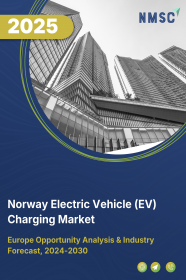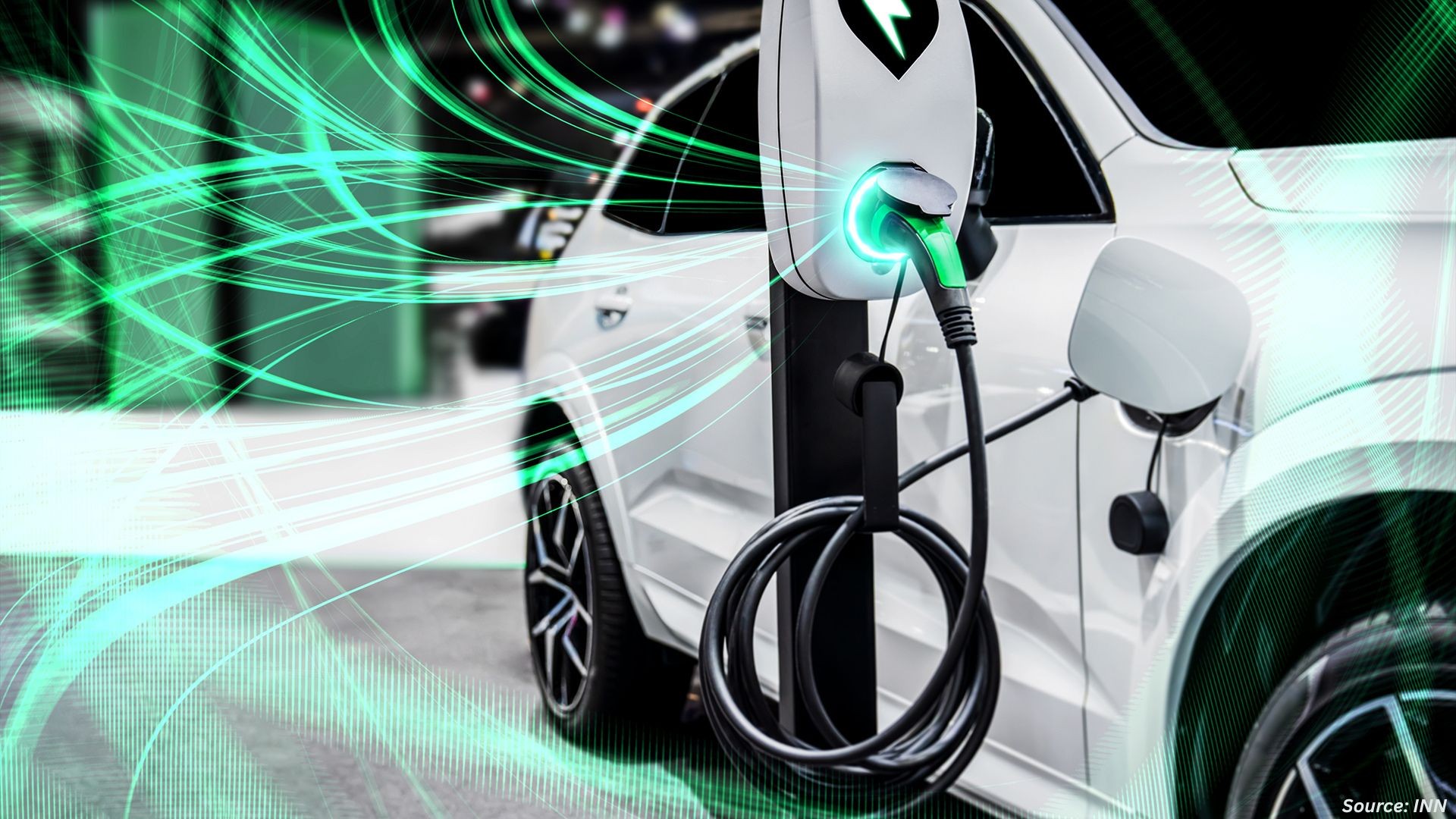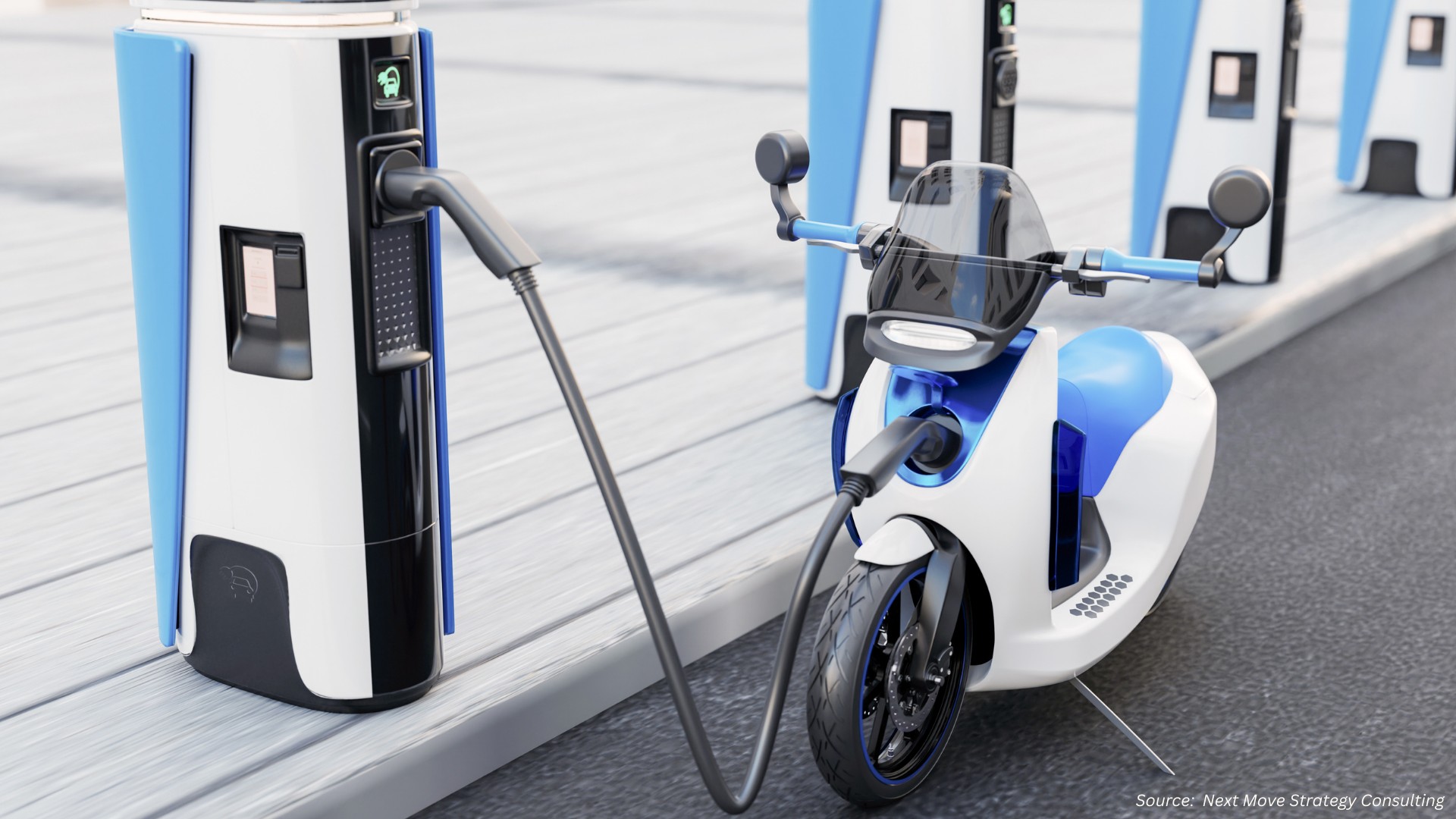
Norway Electric Vehicle (EV) Charging Market by Type of Charger (AC Chargers, and DC Chargers), by Charging Speed (Level 1, Level 2, and Level 3), by Connector Type (Type 1, Type 2, CCS, CHAdeMO, and Others), by Installation (Fixed, and Portable), and by End User (Commercial, and Residential) – Opportunity Analysis and Industry Forecast 2023–2030
Industry: Automotive & Transportation | Publish Date: 13-Nov-2025 | No of Pages: 109 | No. of Tables: 142 | No. of Figures: 87 | Format: PDF | Report Code : AT863
Market Definition
Norway Electric Vehicle (EV) Charging Market was valued at USD 317.74 million in 2022, and is predicted to reach USD 2919.4 million by 2030, with a CAGR of 32.6% from 2023 to 2030. Electric vehicle chargers are defined by the amount of energy delivered to the vehicle’s battery per unit of time. It is an infrastructure that is used to connect the plug-in electric vehicle to an electrical outlet to charge the battery of the vehicle. Electric vehicle chargers are used to provide charging to EVs with a battery and the electrical source that helps to charge the battery.
Electric vehicles, neighborhood EVs, and plug-in hybrids can all be charged at a charging station by connecting to an electrical source. Advanced features including smart meters, cellular connectivity, and network access are available on some charging stations.
The charging of EVs can be carried out through several levels of charging such as level 1, level 2, and level 3. The higher the level of charging, the faster the charging process causing more power to be delivered to the vehicle. The use of electric vehicles significantly reduces the carbon footprints released into the atmosphere, which contain toxic gas. The growing threat of carbon emissions and other harmful gases stemming from transportation has triggered the vital necessity of adopting electric vehicles.
In addition, the penetration of EV charging is high in commercial spaces as compared to residential ones. Long-distance trips would benefit from ultra-fast charging capabilities made possible by public charging infrastructure. However, EV chargers for residential spaces offer significant growth potential as they are affordable and more convenient for charging electric vehicles as compared to commercial charging stations.
Proactive Government Measures Drive EV Adoption and Infrastructure Demand
Norway’s government has been at the forefront of driving the transition to zero-emission mobility through progressive policy initiatives. A cornerstone of this strategy is the national target that all new car sales by 2025 must be zero-emission vehicles—either electric or hydrogen-powered. This ambitious vision has made Norway a global benchmark for EV adoption.
By the end of 2024, battery electric vehicles (BEVs) comprised 88.9% of all new passenger car sales, reflecting strong consumer alignment with the government’s environmental goals. The continuation of powerful incentives—such as VAT exemptions (up to NOK 500,000), reductions in road tolls, and ferry fare waivers—has helped sustain demand and facilitate a smooth transition. These policies, continuously updated to reflect market maturity, have directly stimulated the rapid expansion of EV charging infrastructure nationwide.
Technological Innovations Accelerate Charging Infrastructure Development
Technological advancements are playing a vital role in shaping Norway’s EV infrastructure. Leading players like NIO, ABB, and Eviny are introducing innovative solutions that enhance the convenience and efficiency of EV charging. NIO’s expansion of its battery swapping stations—15 in Norway as of July 2024—provides a unique alternative to conventional charging by enabling a full battery exchange in about four minutes.
Meanwhile, ABB, in partnership with Eviny, has installed the Terra 360—the world’s fastest EV charger—at strategic locations such as Bergen and Geilo. Capable of delivering up to 360 kW, these chargers can fully charge an EV in less than 15 minutes. These advancements not only reduce range anxiety but also raise user expectations for faster, more efficient charging, contributing to broader EV adoption across the country.
High Capital Costs of Fast Chargers Hinder Broad Market Penetration
Despite Norway's leadership in EV adoption, the expansion of fast-charging infrastructure is constrained by significant upfront costs. Level 1 and Level 2 chargers, while more affordable, require long charging times (6–16 hours), making them less suitable for high-demand users or fleet operations.
In contrast, Level 3 DC fast chargers, which can recharge a vehicle in 20–30 minutes, are essential for supporting Norway's growing EV base. However, their installation involves considerable capital investment, including grid enhancements, advanced equipment, and site development. These costs pose a major challenge, particularly in low-density or rural areas, where demand may not justify the investment. Without targeted financial support or incentives, scaling high-speed infrastructure may remain limited, especially for smaller operators and municipalities.
Rising Interest in Vehicle-to-Grid (V2G) Creates New Avenues for Market Growth
Vehicle-to-Grid (V2G) technology presents a transformative opportunity for Norway’s EV ecosystem. By enabling bi-directional energy flow, V2G allows EVs not only to draw power from the grid but also to return surplus electricity during peak demand or periods of fluctuating renewable energy supply. This capability aligns seamlessly with Norway’s predominantly hydro-based power system and its vision for a more flexible, sustainable grid.
Given Norway’s strong EV penetration, the country is uniquely positioned to lead in V2G deployment. Pilot programs and academic research are already underway, laying the foundation for future commercial applications. While infrastructure and technology requirements for V2G—such as advanced inverters, communication standards, and durable hardware—are complex and capital-intensive, they offer high-value opportunities for hardware manufacturers and software developers. As the technology evolves, V2G could play a pivotal role in Norway’s transition to a resilient and intelligent energy-transport ecosystem.
Competitive Landscape
The Norway Electric Vehicle (EV) Charging industry includes several market players such as Kempower, Zaptec, Schneider Electric, Siemens, ABB, Delta, Enphase, Tesla, Easee, Defa, EV BOX, Bosch EV Solutions, Wallbox, Charge Point, Tritium, and others.
Key Benefits
-
The Norway Electric Vehicle (EV) Charging market report provides a quantitative analysis of the current market and estimations through 2023-2030 that assists in identifying the prevailing market opportunities to capitalize on.
-
The study comprises a deep dive analysis of the market trend including the current and future trends for depicting the prevalent investment pockets in the market.
-
The information related to key drivers, restraints, and opportunities and their impact on the market is provided in the report.
-
The competitive analysis of the market players along with their market share in the Norway Electric Vehicle (EV) Charging market.
-
The SWOT analysis and Porter’s Five Forces model are elaborated in the study.
-
Value chain analysis in the market study provides a clear picture of the stakeholders’ roles.
Norway Electric Vehicle (EV) Charging Market Key Segments
By Type of Charger
-
AC Chargers
-
Mode 1 (2.3 kW)
-
Mode 2 (2.3 kW)
- Mode 3 (3.7 kW to 22 kW)
-
-
DC Chargers (22 kW to 350 kW)
By Charging Speed
-
Level 1
-
Level 2
-
Level 3
By Connector Type
-
Type 1
-
Type 2
-
CCS
-
CHAdeMO
-
Others
By Installation
-
Fixed
-
Portable
By End User
-
Commercial
-
Commercial Public EV Charging Stations
-
Highway Charging Stations
-
Fleet Charging Stations
-
Workplace Charging Stations
-
-
Commercial Private EV Charging Stations
-
-
Residential
-
Private Home
-
Apartment
-
Key Players
-
Kempower
-
Zaptec
-
Schneider Electric
-
Siemens
-
ABB
-
Delta
-
Enphase
-
Tesla
-
Easee
-
Defa
-
EV BOX
-
Bosch EV Solutions
-
Wallbox
-
Charge Point
-
Tritium
Report Scope and Segmentation
|
Parameters |
Details |
|
Market Size in 2022 |
USD 317.74 Million |
|
Market Volume in 2022 |
26 Thousand Units |
|
Revenue Forecast in 2030 |
USD 2919.4 Million |
|
Growth Rate |
CAGR of 32.6% from 2023 to 2030 |
|
Analysis Period |
2022–2030 |
|
Base Year Considered |
2022 |
|
Forecast Period |
2023–2030 |
|
Market Size Estimation |
Million (USD) |
|
Growth Factors |
Proactive Government Measures Drive EV Adoption and Infrastructure Demand. Technological Innovations Accelerate Charging Infrastructure Development. |
|
Companies Profiled |
15 |
|
Market Share |
Available for 10 companies |
|
Customization Scope |
Free customization (equivalent up to 80 working hours of analysts) after purchase. Addition or alteration to country, regional, and segment scope. |
|
Pricing and Purchase Options |
Avail customized purchase options to meet your exact research needs. |

















 Speak to Our Analyst
Speak to Our Analyst

























